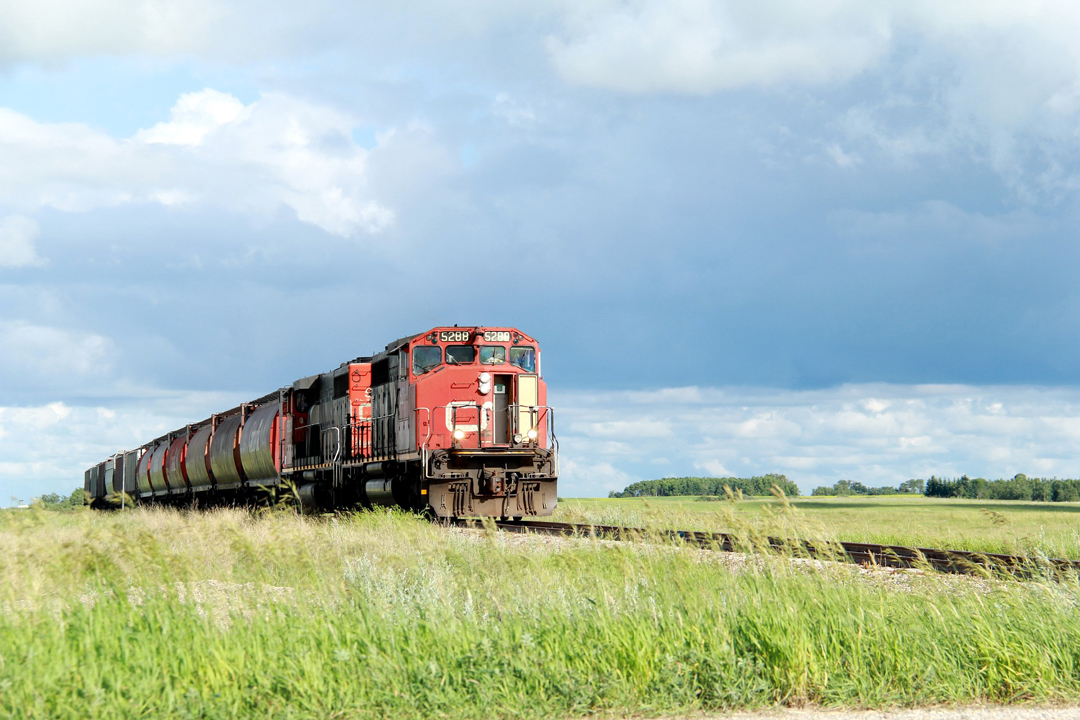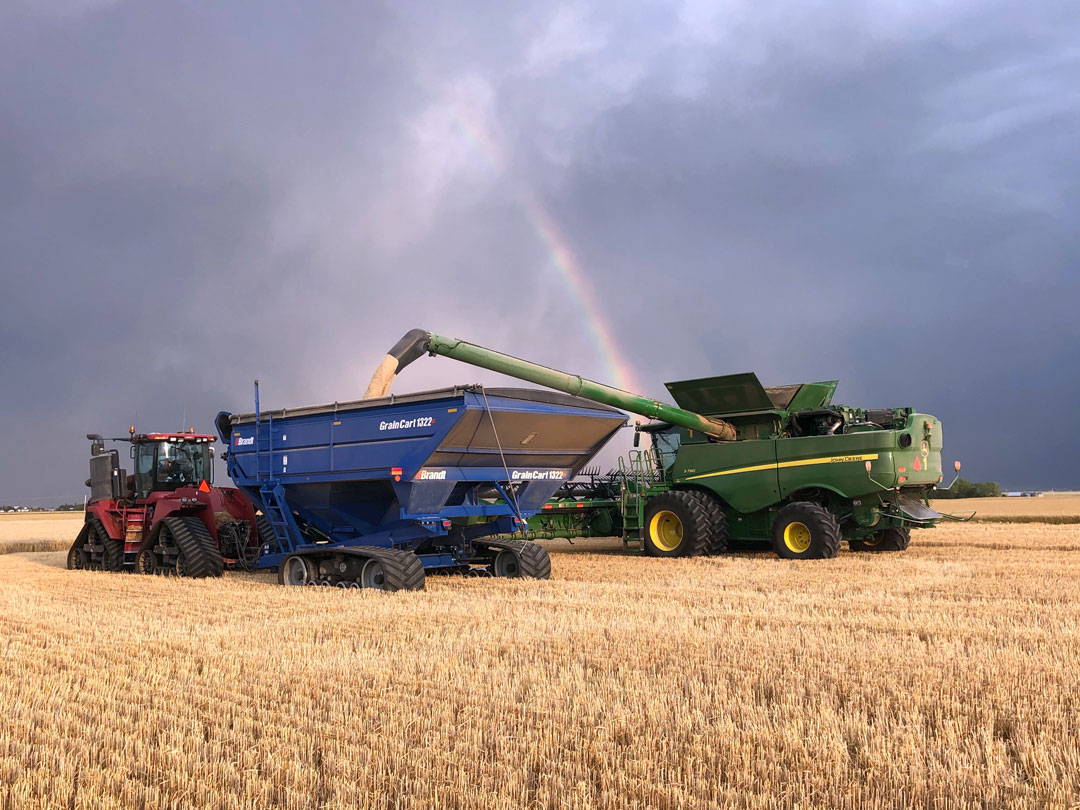LEGISLATION TARGETS COMPETITIVE RAILWAY FREIGHT SERVICE
BY IAN DOIG • PHOTO BY PIXABAY
Following a five-year gap, the federal government reintroduced extended interswitching to the rail system with its 2023 budget. The action was taken at the recommendation of the government’s National Supply Chain Task Force report released in October 2022. Western Grain Elevator Association (WGEA) executive director Wade Sobkowich believes interswitching legislation must go further to make rail freight shipment more competitive.
GrainsWest: As of May 1, how is the state of rail movement of Prairie grain?
Wade Sobkowich: Early last week there were minor disruptions when Public Service Alliance of Canada (PSAC) workers decided to strike at terminal facilities. The whole principle was concerning to us because in the past we’ve had blockades, rail strikes and disruptions at terminal facilities. Now we have government workers striking at terminal facilities, but this hasn’t impacted grain flows.
GW: What is meant by the term “extended interswitching”?
WS: It is just an extension of the distance we’re already allowed for interswitching. Instead of 30 kilometres, now we’re allowed to interswitch within a greater distance. The way it’s written in the Budget Implementation Act it is 160 kilometres. We’re saying it should really be 500 kilometres.
GW: How does it ideally benefit grain shipment?
In principle, interswitching is when you have a single rail line running past your shipping point. In our case, it’s a grain elevator. You’re beholden to a monopoly. CN and CP are dual monopolies, because depending on your shipping form, you’re captive to one or the other. Existing interswitching provisions allow you to take the traffic that you would ship on one carrier, and as long as the interchange point between the two carriers is within 30 kilometres of the shipping point, if that traffic can be physically interswitched, you can exercise your right to use the secondary carrier to take on that traffic.
In that case, a regulated freight rate is set to that primary carrier by the Canadian Transportation Agency (CTA). They have to pick up that traffic from the primary point and take it to the interchange. The second carrier comes in and picks up that traffic and takes it the rest of the distance.
A shipper would avail themselves to that rate if they’re not happy with the freight rates they’re getting from the primary carrier or they’re not happy with the service levels they’re getting from the primary carrier, and in some cases both.
With the expanse of the Prairies, there aren’t a lot of interchanges within 30 kilometres of an elevator. The Budget Implementation Act proposes to expand that distance to 160 kilometres within the Prairies. When the distance is 160 kilometres, many will have access to an interchange point. We are saying it really should be 500 kilometres, because why shouldn’t every elevator have access to an interchange point?
GW: Why was the mechanism eliminated for five years?
WS: It has to do with how the legislation was introduced when it came into effect in 2014. In 2013, we had a grain transportation crisis. We had a very, very large crop, and inadequate capacity and service from the railways. That caused all kinds of problems. It was a mess. The government of the day introduced emergency legislation. They introduced a provision that allowed the CTA to set different distances in different regions. And then the CTA set it at 160 kilometres for the Prairies. But because it was introduced under emergency legislation, it was allowed to sunset.
GW: What does the reimplementation of extended interswitching do for grain companies that rely on the rail system?
WS: In concise terms, it turns a monopoly situation into a duopoly situation, which isn’t great, but it’s better than a monopoly.
It’s an improvement. It gives you the choice and the right to use a secondary carrier for the longer portion of the movement if you’re not getting reasonable rates or service from the primary carrier. No elevator or shipping company wants to go to a second carrier just because. They prefer to use the primary carrier if they’re getting reasonable service and rates.
That leads me to another point, which is, when we look at this provision, it’s being put forward as a pilot project for 18 months. And when we look back at it, let’s say two years from now, to see how effective it was, we can’t just look at how often it was actively used. The fact that it’s there gives the shipper more bargaining power with the primary carrier to the point where they may get better service and rates from the primary carrier just to avoid using the interswitch in the first place.
GW: The interswitch provision is enough to benefit shippers.
WS: It provides the incentive for the rail freight market to behave more as though it was a competitive marketplace.
GW: The reinstatement of extended interswitching was done at the recommendation of the federal government’s Supply Chain Task Force report. What additional measures would you like to see come out of the report’s recommendations?
WS: This is only one tool in the toolbox. It’ll go some way towards it, but it’s not going to balance the playing field between shippers and railways.
We would like to see more discipline in place associated with the railway grain plans. For the railways to publish a plan every year that identifies how many rail cars they’re going to provide on a week-to-week basis for the grain industry. But there’s nothing holding the railways accountable to actually meet the numbers they put forward. We would like to see some sort of discipline put in place.
Another thing we want to see, and it is one of the recommendations from the Supply Chain Taskforce, is to make improvements to the CTA’s authority in the areas it is responsible—own motion investigative powers and giving the CTA access to data to properly assess the railways. We do see both accountability provisions and competitive access provisions working in tandem to provide an entire suite of solutions.
GW: How valuable is this interswitching pilot to grain shippers?
WS: The term of the pilot is 18 months and that is very short. Grain companies make sales on an ongoing basis and at a price. In order to establish your sales price, you need to understand what costing and service levels are going to be. And in this case, rail service.
Companies are now selling for execution six to nine months from now. Let’s say these provisions come into effect next month. Well, we’ve already lost a large window of time where we’re already selling beyond or well into that 18-month period. The effectiveness of the provision may only be primarily for the tail end of that 18 months. And then companies aren’t going to sell beyond that. Or when they make sales beyond the 18 months, they’re going to do so without confidence the provision will be renewed beyond 18 months.
It should just be made permanent. But if you are going to do a pilot, put a longer timeline on it like five years.
The WGEA is a participant in the Flip The Switch campaign. For more information, visit interswitching.ca.







Comments